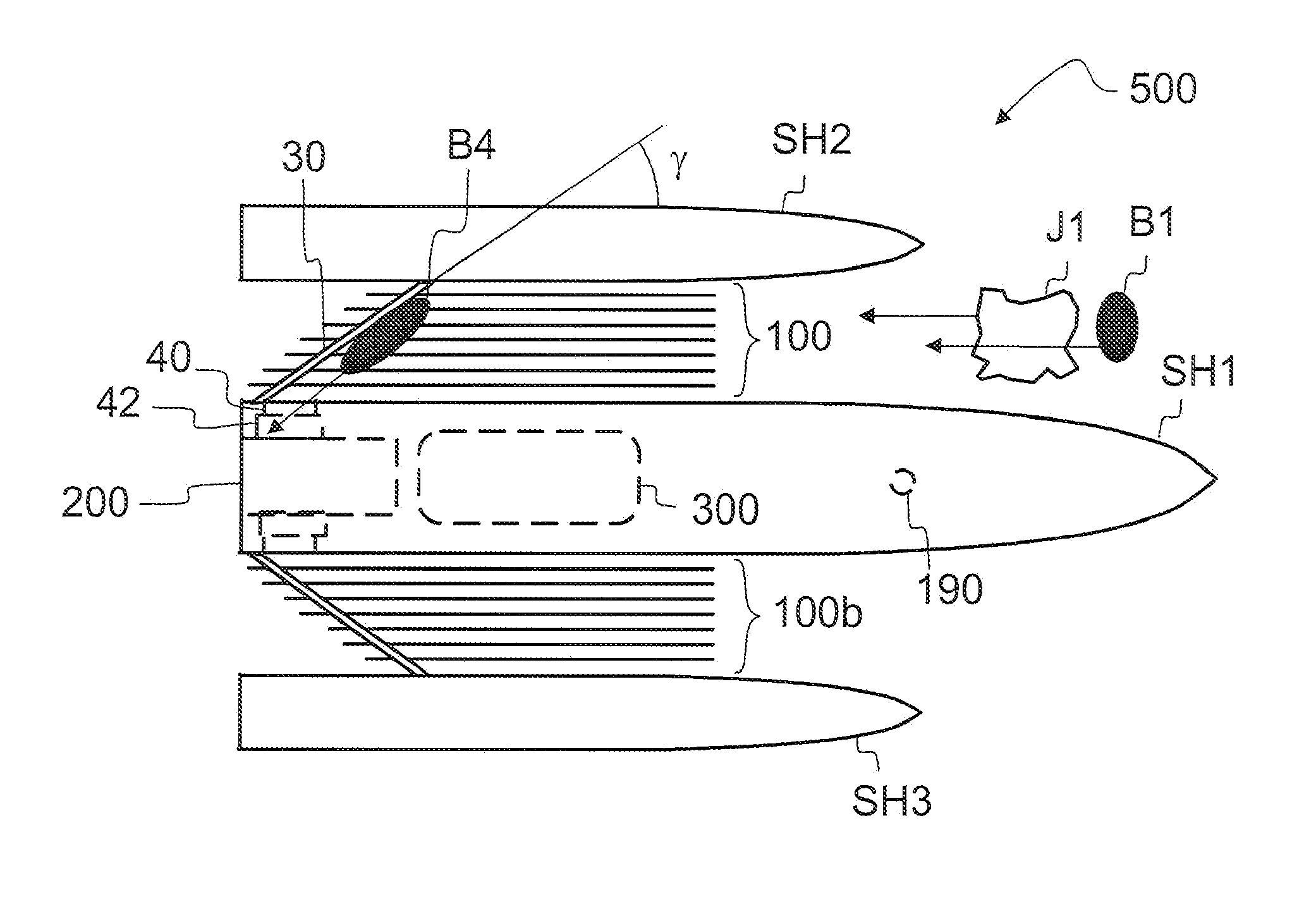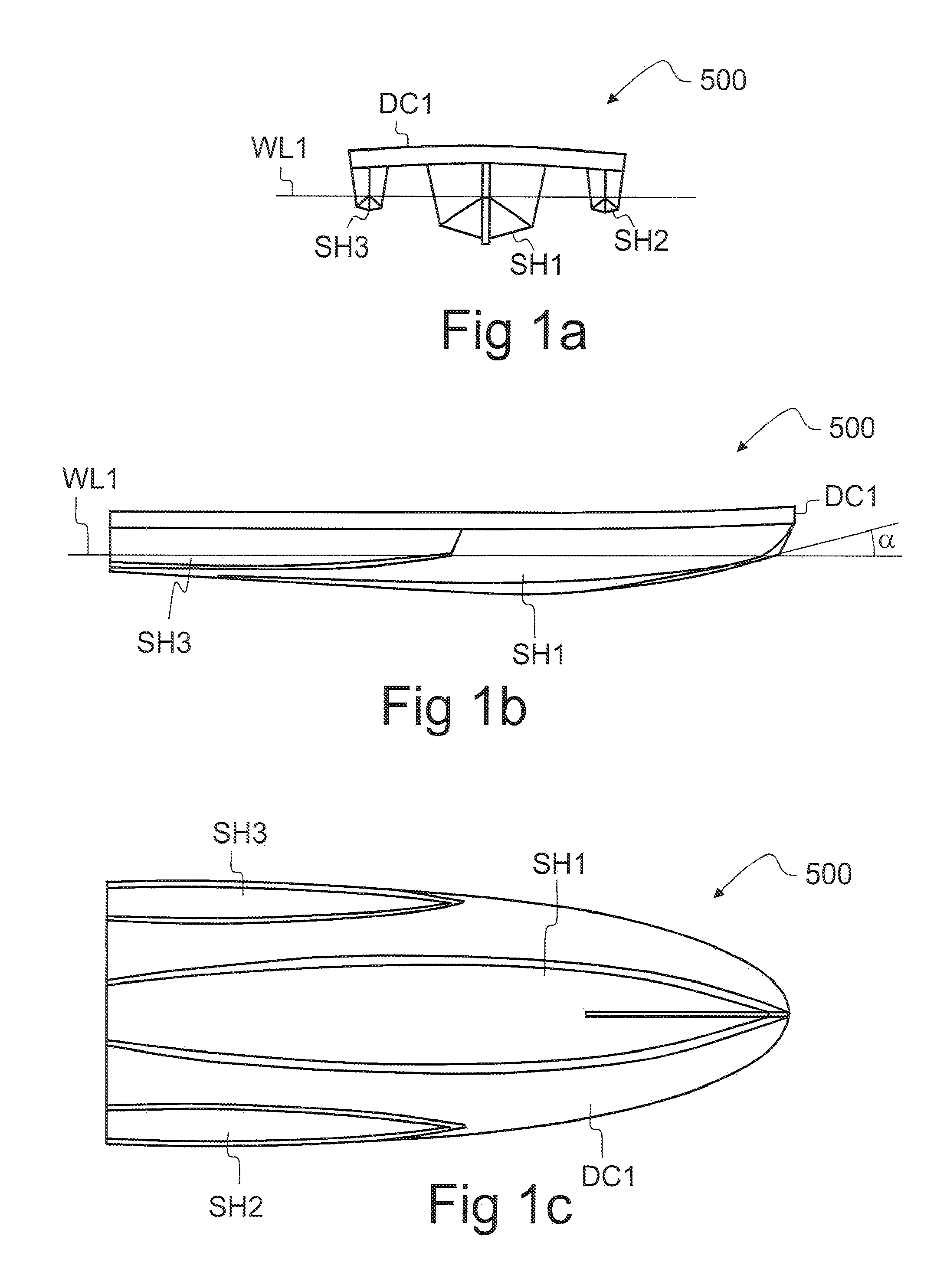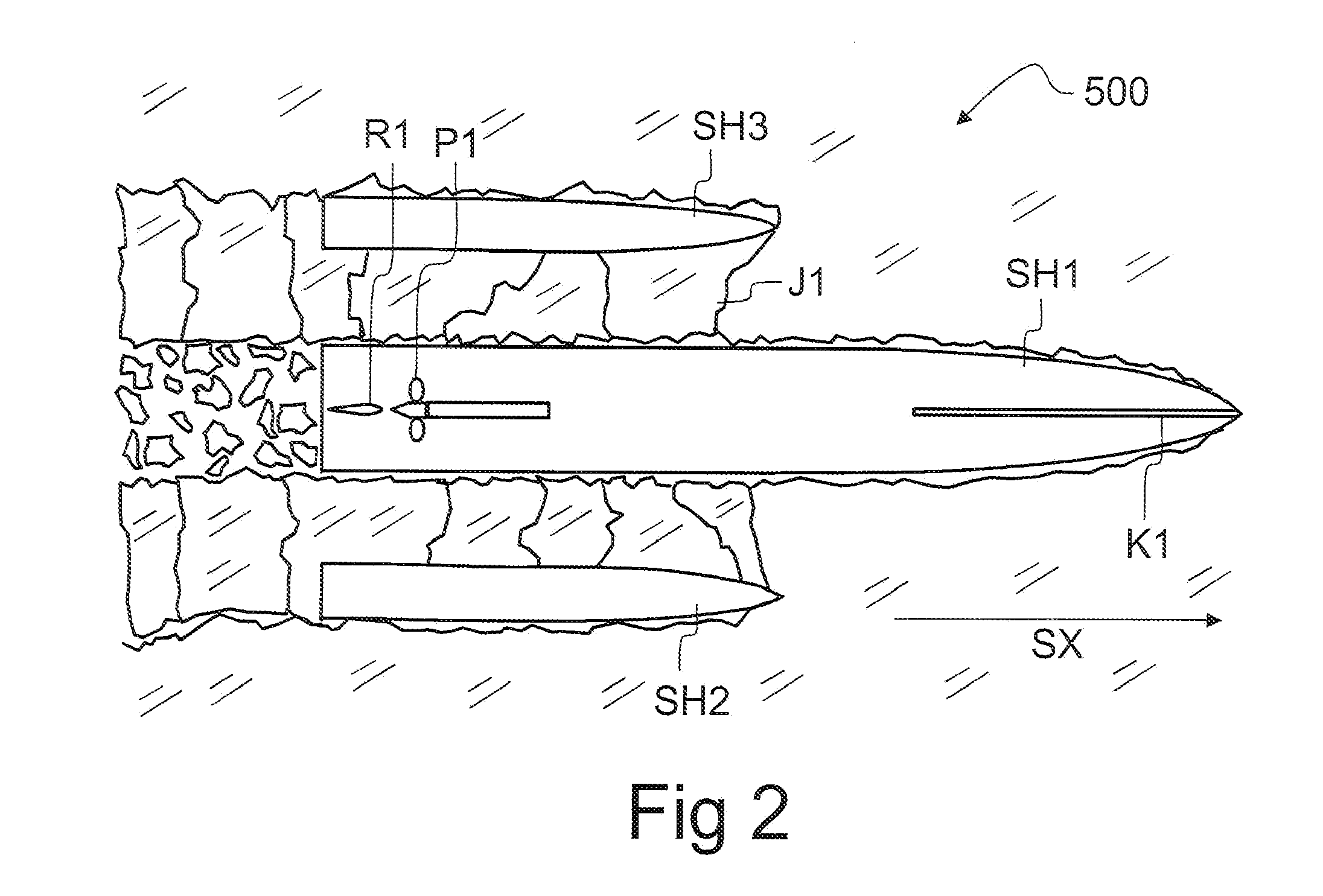Oil combatting vessel
a technology of oil combating vessel and oil tank, which is applied in special-purpose vessels, water cleaning, separation processes, etc., can solve the problems of difficult collection of spilled oil from among the ice in such circumstances, environmental damage, and oil damage, and achieve the effect of minimizing the height variation of the oil collecting device caused by sea swell
- Summary
- Abstract
- Description
- Claims
- Application Information
AI Technical Summary
Benefits of technology
Problems solved by technology
Method used
Image
Examples
Embodiment Construction
[0040]The separating structure according to the invention is suited for use especially in a three-hulled vessel, i.e. a trimaran. It is preferable if the vessel is further able to break fast ice.
[0041]Referring to FIGS. 1a-1c, the three-hulled vessel 500 comprises a middle hull SH1, a right-side side hull SH3 and a left-side side hull SH2. The hulls SH1, SH2, SH3 can be connected to each other by the deck DC1. WL1 refers to the level of the water surface. The angle between the keel and the water surface is α. If there is no keel, the angle α means the angle between the bottom of the middle hull SH1 and the water surface at the height of the water surface WL1.
[0042]Referring to FIG. 2, the vessel 500 can be dimensioned to be suited especially for breaking fast ice. The prow of the side hulls SH2, SH3 can be situated essentially further back than the prow of the middle hull SH1, whereby the side hulls, which glide on top of the ice, can break blocks J1 from the ice on both sides of th...
PUM
 Login to View More
Login to View More Abstract
Description
Claims
Application Information
 Login to View More
Login to View More - R&D
- Intellectual Property
- Life Sciences
- Materials
- Tech Scout
- Unparalleled Data Quality
- Higher Quality Content
- 60% Fewer Hallucinations
Browse by: Latest US Patents, China's latest patents, Technical Efficacy Thesaurus, Application Domain, Technology Topic, Popular Technical Reports.
© 2025 PatSnap. All rights reserved.Legal|Privacy policy|Modern Slavery Act Transparency Statement|Sitemap|About US| Contact US: help@patsnap.com



